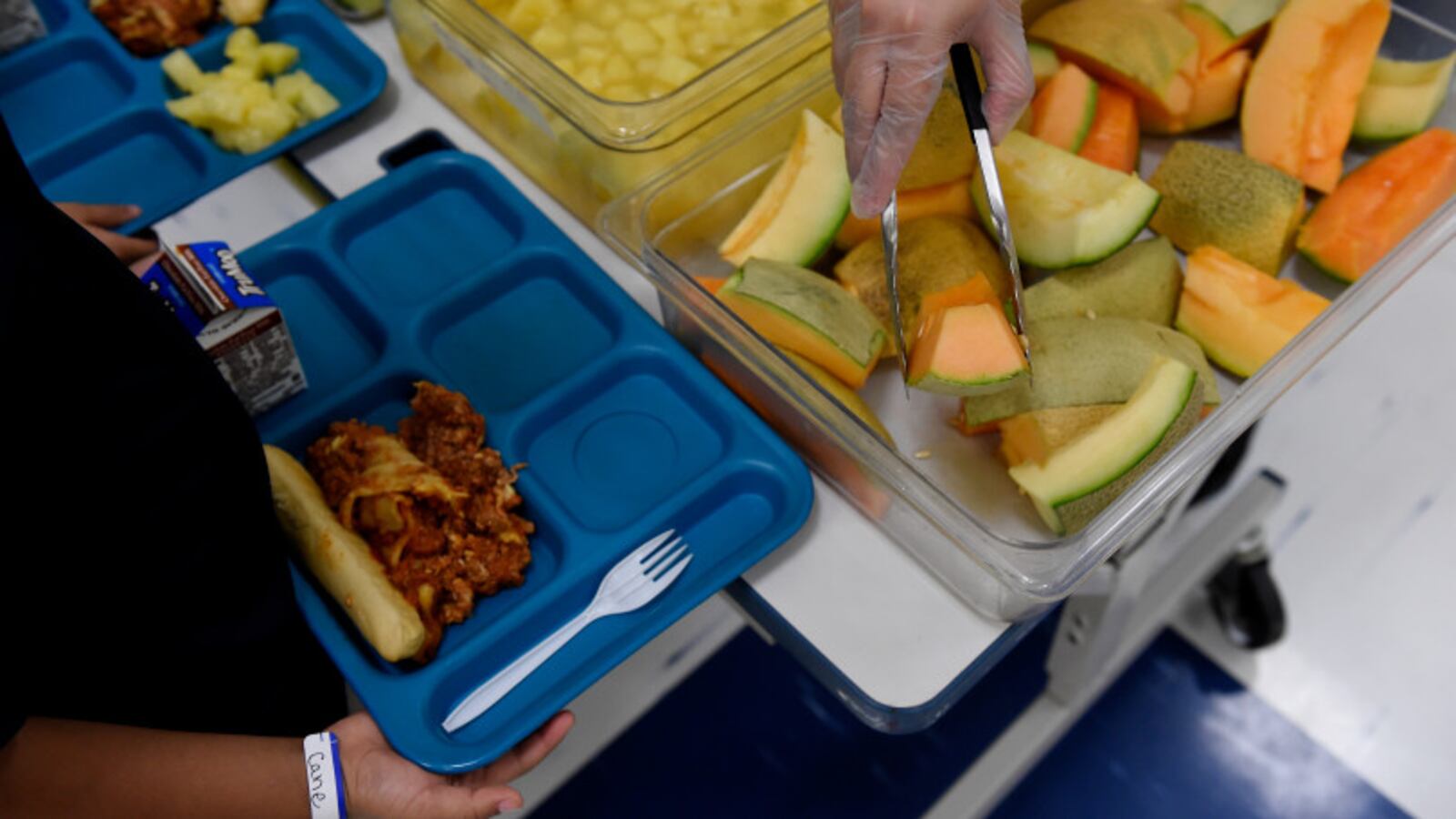Colorado students who qualify for a reduced price lunch can get it for free, thanks to a state program that covers the extra cost. But that’s only through fifth grade.
A bill sponsored by state Sen. Rhonda Fields, an Aurora Democrat, and state Sen. Bob Gardner, a Colorado Springs Republican, would extend this program to middle school students. State analysts estimate it would cover 1.4 million lunches at a cost of $564,000 in its first year.
In middle school, some Colorado school districts see a sharp decrease in the number of students eating school lunches, and school nutritionists don’t think that’s a coincidence or some adolescent preference.
To understand this, you need to know there are two kinds of free lunch in Colorado. The federal government picks up all the cost for families who earn very little, and some of the cost for families who earn a little more but not that much. Since 2008, the state has covered the difference for younger children, rendering their lunches free to them, but as those kids get older, that state benefit expires, and parents are expected to pay something. This change catches some families by surprise.
“Your financial situation has not changed, and the last thing you were thinking was that you would have to pay for lunch when your kid goes from fifth grade to sixth grade,” said Danielle Bock, nutrition services director for the Greeley-Evans school district.
In Greeley, roughly 75 percent of elementary students eat school lunch but only 46 percent of middle school students do. At the same time, it’s not uncommon to hear students who come back from the weekend saying they’ve barely eaten since Friday, Bock said. Meanwhile, in the Cherry Creek School District, which provides its own lunch subsidies to students, middle school lunch participation goes down only 8 percent.
Bock said she’s also seeing an increase in the number of students who qualify for a reduced price lunch, as opposed to a free lunch. These are usually students who used to just pay for lunch but whose families are struggling more now, she said, not students from lower-income families whose parents are earning more money.
Currently, households that earn less than 130 percent of the federal poverty level, or $31,980 for a family of four, qualify for free lunch through the federal program. Families who earn between 130 and 185 percent of the federal poverty limit, or up to $45,510 for a family of four, qualify for a reduced price lunch, but students still have to pay 40 cents per meal.
For some families, that’s a struggle. In 2014, bipartisan legislation extended the original state program from second grade through fifth grade. Now, school nutritionists and advocates for children’s welfare want to expand it again to cover sixth, seventh, and eighth graders. The bill authorizes the state to spend between $500,000 and $750,000 a year for these lunches.
“Just because you get to sixth grade doesn’t mean your parents’ wages go up,” Fields said.
Fields arrived at this bill in a slightly circuitous way. She was hearing from constituents – parents and children – about the practice of “lunch-shaming,” in which districts serve unappealing and less nutritious “alternative” meals to children whose parents owe lunch debt.
After a public outcry, Denver promised last year to serve all kids hot lunch and work out payment issues with parents. Private donations paid off outstanding lunch debt, allowing all kids to start the year fresh. Some states have gone further, with New Mexico banning the practice at the state level.
Fields said school administrators and nutritionists told her lunch-shaming isn’t a widespread problem in Colorado, but childhood hunger is. They told her the best way to reduce lunch-shaming is to pay for lunch for more kids.
Community activists say lunch-shaming still occurs, but they support this bill to expand access to free lunch as a first step that can gain bipartisan support. For her part, Fields said school officials have promised her they’ll work to change their policies.
Many advocates have always wanted this program to go all the way through 12th grade.
Fields would like to see that too, but probably not this session.
“We do things incrementally,” she said. “We try to be bipartisan and be successful.”
Youth members of Padres y Jovenes Unidos said they’ve been in the same shoes as the students this bill would help.
“This bill is important, at least for me, because I have younger siblings, and I don’t want to have to worry if they’re eating or not,” said Jasmine Gonzalez. “I just want them to have a good middle school experience, and that includes having the correct nutrition in their lunch.”
Gonzalez remembers being served an alternative lunch when she was younger – “that just made me feel like an outsider, that I wasn’t equal to the other students” – and she has friends who go hungry now.
“You can see the impact it has on them during the school day,” said Gonzalez, now a junior at DSST: College View. “They can’t focus on their work, and you hear their stomach growling.”
Correction: An earlier version of this story overstated the number of students who would benefit from this bill. The allocation would cover 1.4 million reduced-price lunches, not feed 1.4 million children.

